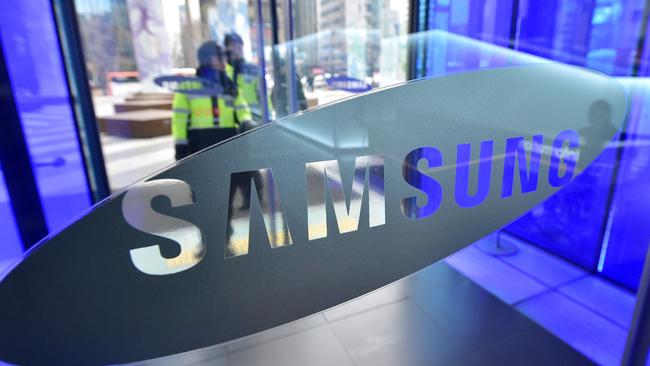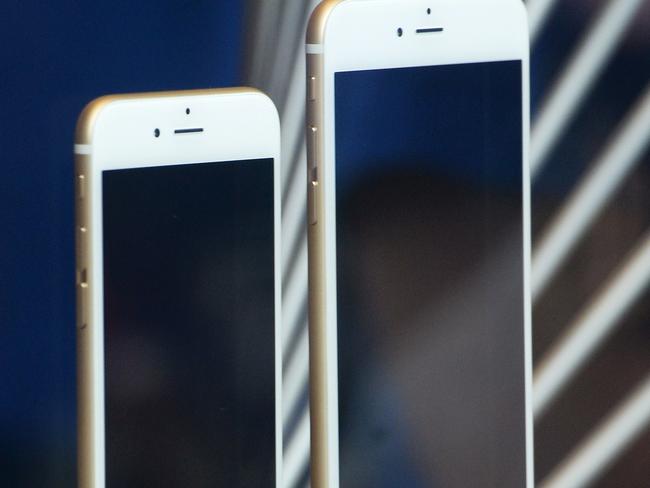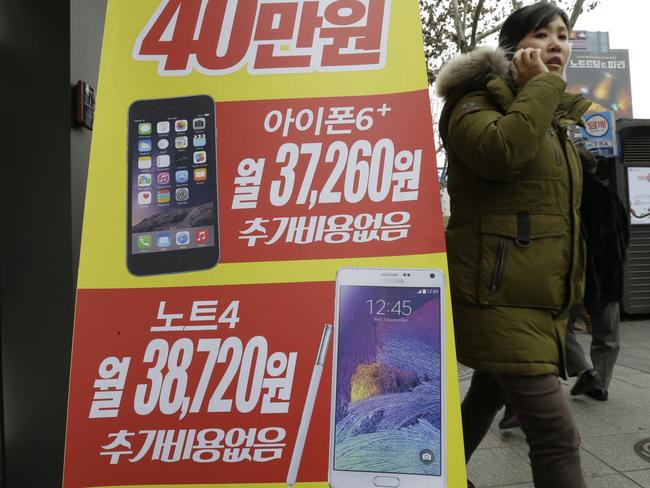How Samsung is being challenged from all sides
FIRST it was the challenger brand everyone wanted. And then it was the dominant player no one could touch. Now it’s neither as the Korean giant struggles.

Business Technology
Don't miss out on the headlines from Business Technology. Followed categories will be added to My News.
SAMSUNG lost the battle of the big phones last quarter as Apple’s copycat large iPhone lured buyers in the crucial Chinese market.
The South Korean company said Thursday its October-December profit sank, with an improvement in its semiconductor business insufficient to mask its mobile problems.
It was in China, the world’s largest market for smartphones, where Samsung’s dramatic decline was most evident. Its weakness there is a key reason why Samsung’s share of global smartphone sales dropped to about one quarter last year from a one-third share in 2013.
Apple contributed to Samsung’s latest reversal in fortune, launching iPhones with bigger screens that robbed Samsung’s Galaxy phones of a key selling point. Samsung was already battling competition in low-end phones from upstart manufacturers such as China’s Xiaomi.
Samsung is struggling in countries such as China because “they’re sort of being eaten from the bottom up by regional players” including Huawei and Xiaomi, said Ben Bajaran, an analyst at Silicon Valley research firm Creative Strategies.

“And now with Apple being competitive in larger phones, you’re seeing Samsung losing any edge they had at the high end,” he said.
In the second quarter last year, Xiaomi overtook Samsung to become the biggest selling smartphone maker in China. Samsung now ranks third in that market, after Apple raced to the top in the fourth quarter, according to research company Canalys.
Thanks to its bigger iPhones, Apple sold a record 74.5 million iPhones last quarter, which along with high prices helped make it the world’s most profitable company.
According to Strategy Analytics, Apple tied Samsung in global smartphone sales, the first time Samsung has not had a big lead since late 2011. The research firm said Apple’s new iPhones were “wildly popular” in China as well as the United States and Europe. Counterpoint, another market research firm, put Apple narrowly ahead of Samsung.

A third firm, International Data Corp., estimated Apple came just short of a tie with Samsung. It’s not unusual for research firms to produce slightly different estimates.
But IDC said Apple’s sales were especially “impressive” because the new iPhone models are selling at a higher average price than older models, at a time when Samsung and other rivals are competing to offer phones at significantly lower prices. Apple shares gained 1.5 per cent Thursday and are up more than 7 per cent since it announced iPhone sales figures for the December quarter.
Samsung, in contrast, reported its fourth straight drop in quarterly earnings. Profit sank 27 per cent to 5.3 trillion won ($4.9 billion). Strategy Analytics estimated that Samsung shipped 74.5 million smartphones in the quarter, down from nearly 90 million in the previous year’s quarter. Samsung has not given a precise figure but estimated it sold between 72.2 million and 75.1 million smartphones.
Samsung didn’t give clear guidance of how its mobile business would perform during the current quarter. Instead, to appease investors the company announced a 40 per cent increase in its annual dividends for 2014. Its share price fell 1.3 per cent in Seoul.
Repeating its previous statements, the company said it will try to differentiate its smartphones with new materials and designs and will reduce the number of smartphone models to streamline its business.
Originally published as How Samsung is being challenged from all sides


